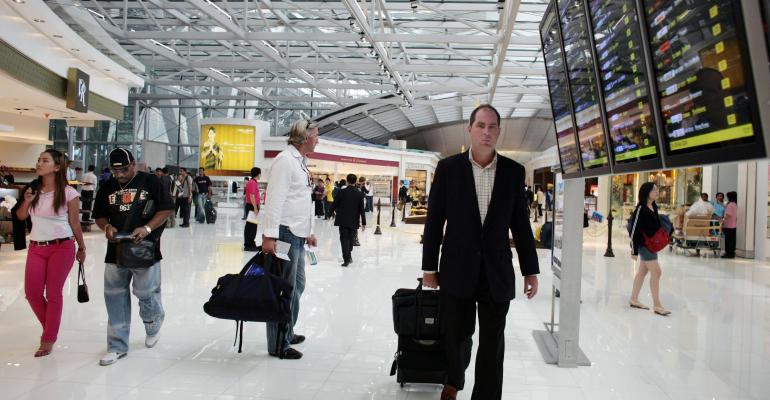While investors remain starved for yield in this low growth, low yield market, many have yet to notice an asset class that is visible in their day-to-day life. Infrastructure has emerged as an opportunity in a growing “real assets” investment strategy, and it’s time for retail investors to get on board. Listed infrastructure investing—allocating money to companies that own and/or operate critical infrastructure assets—provides new opportunities for investors with the potential to provide growth and stability, and diversify a traditional equity/bond investment portfolio.
One important sector within the infrastructure opportunity is an area with which few investors in the U.S. are familiar: airports. In the U.S., nearly all commercial airports are owned and operated by the government. However, beyond the borders lie opportunities for investors to gain access to airports and their unique mix of potential revenue growth and stability.
Multiple revenue streams
Imagine a high-end shopping mall with guaranteed foot traffic, an above average consumer profile and a captive audience. Now combine that mall with a regulated utility that gets paid in good times and bad for providing a critical service to the local economy. In a nutshell, that’s the unique business model of private airports. Airports derive revenue from two main sources. The first is heavily regulated and is related to conventional aviation activities, which generate passenger fees, airplane landing and parking fees, and passenger security revenue. The second source of revenue, however, is unregulated and is the key to profitability when investing in airport assets. This revenue is related to retail space, parking fees and real estate used to develop hotels and hangars. There is a reason that all security lines lead to a bevy of retail shops and restaurants—from a growth perspective an airport can be thought of as a mall where you park planes. And the layout of that “mall,”—the strategic placement of luxury retail in high-end international airline terminals—can be an important strategic driver of profitability.
Passenger trends and passenger mix are important factors in the analysis of an airports’ retail potential. Take Charles de Gaulle Airport in Paris as an example. The area is a major tourist destination and it isn’t cheap, creating the incentive to shop “duty-free.” Travelers with deep pockets are coming from all over the world and have money to spend in the country (and its airports).
Enduring value
Part of what makes investments in airports so attractive is that the underlying trend of passenger growth continues to take flight. Airline passenger growth has historically grown at a rate of two to three times the rate of GDP growth. As disposable income increases, especially in the emerging markets, more people are flying—both domestically and internationally. And there are plenty of ways to invest in this growth. Of the top 20 global airports by annual number of passengers, nine are owned by publicly traded companies, according to Airports Council International.
Airports, especially ones that are undercapitalized, have a tremendous opportunity to extract more and more value from their existing terminal footprint. To increase profitability, airports don’t always have to make a large investment in building out their infrastructure. They can create value by upgrading stores or simply creating a more efficient layout to drive the highest amount of passengers through the door. Of course, investing in terminal expansion is another, more capital-intensive way that airports have found growth. Additional terminals increase retail space and allow for new airlines to come through, increasing utilization of runways and generating higher load factors (larger planes).
Distinct from other sectors, airports are not nearly as impacted by a nation’s economic cycle or constrained by external factors such as oil prices, which can impinge on airline profitability. In this sense, they can be used as defensive investments, offering stability in various stages of the economic cycle.
Though many airports are trending in the right direction when it comes to generating returns for their investors, the opportunity should be evaluated carefully. Infrastructure investors must understand the potential risks in areas concerning location, regulatory structure and long-term traffic trends. For example, it’s a red flag if an airport relies too heavily on a single airline for the majority of its business, as the airport would correlate highly with the success of the airline. With a keen eye, though, investors can find airports that create an efficient system that fully capitalizes on multiple revenue streams and captures growth from underlying trends. Those airports may prove to be an important allocation and an attractive destination for infrastructure investors.
Todd Briddell serves as CEO and CIO of CenterSquare Investment Management, a firm with $7.5 billion in real assets under management.

